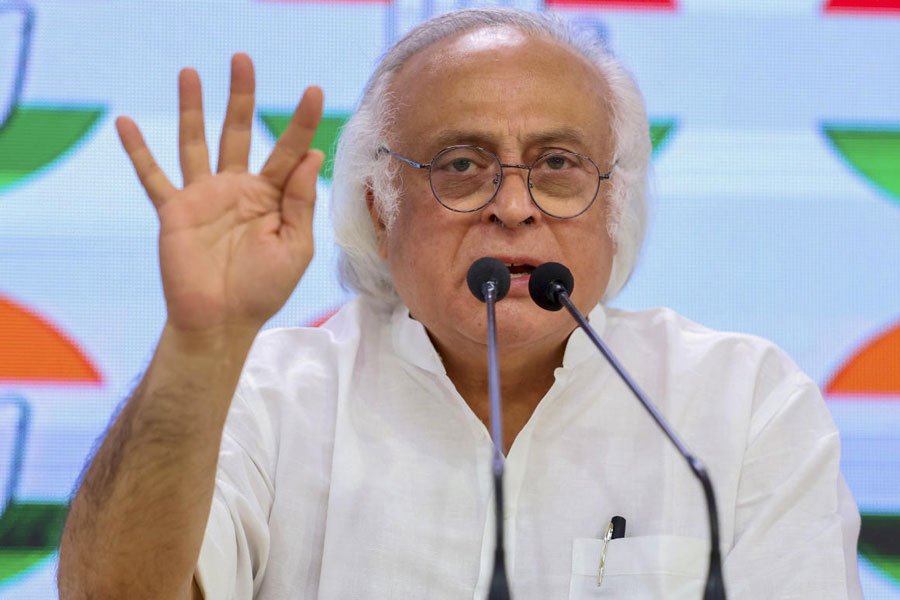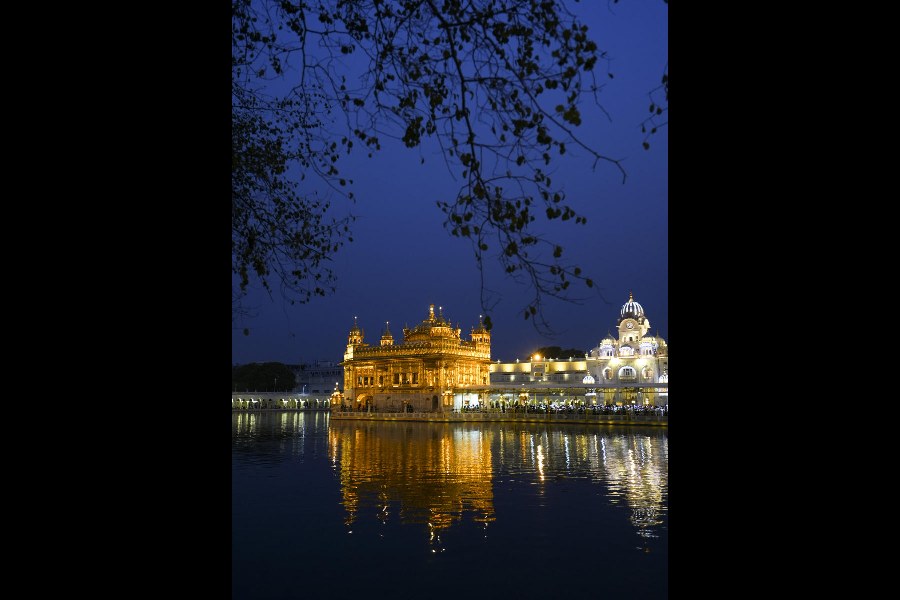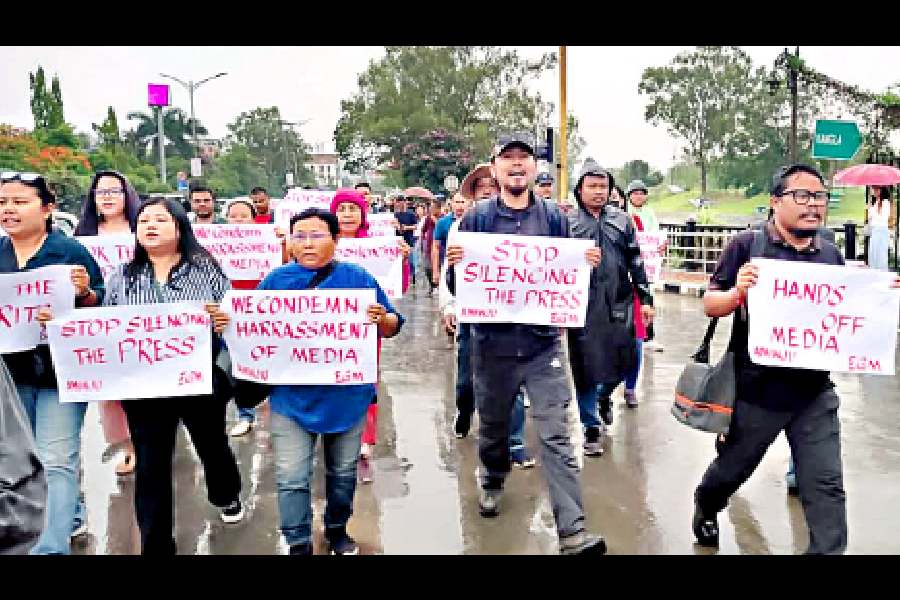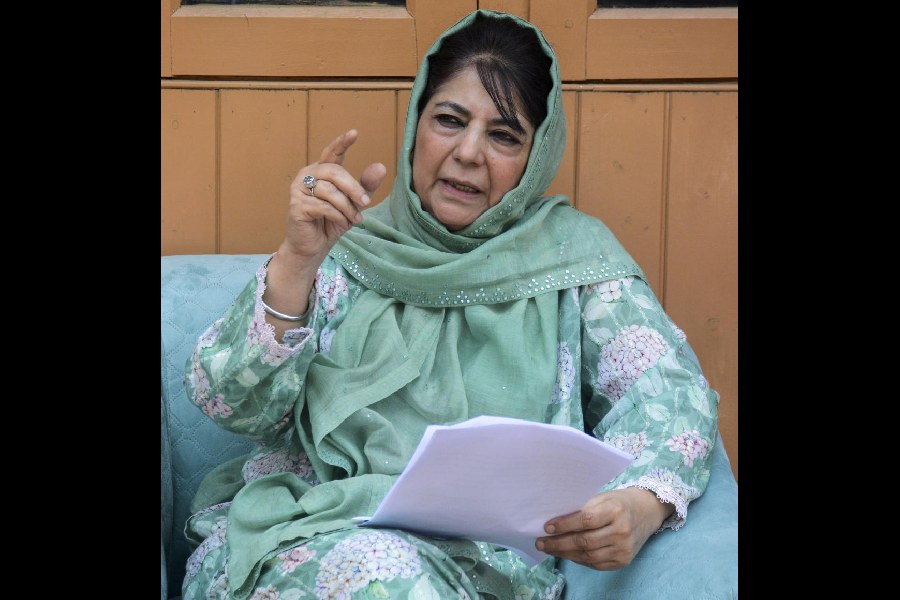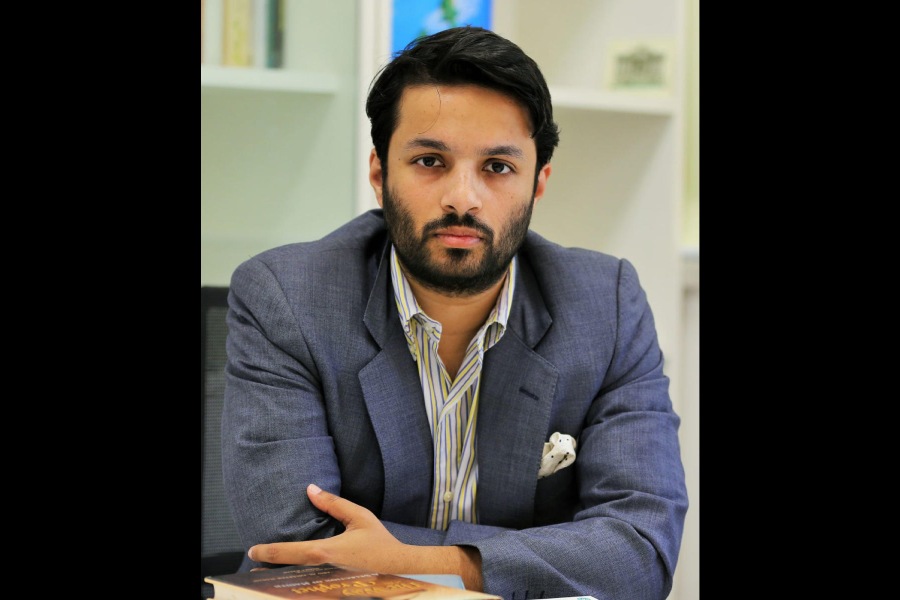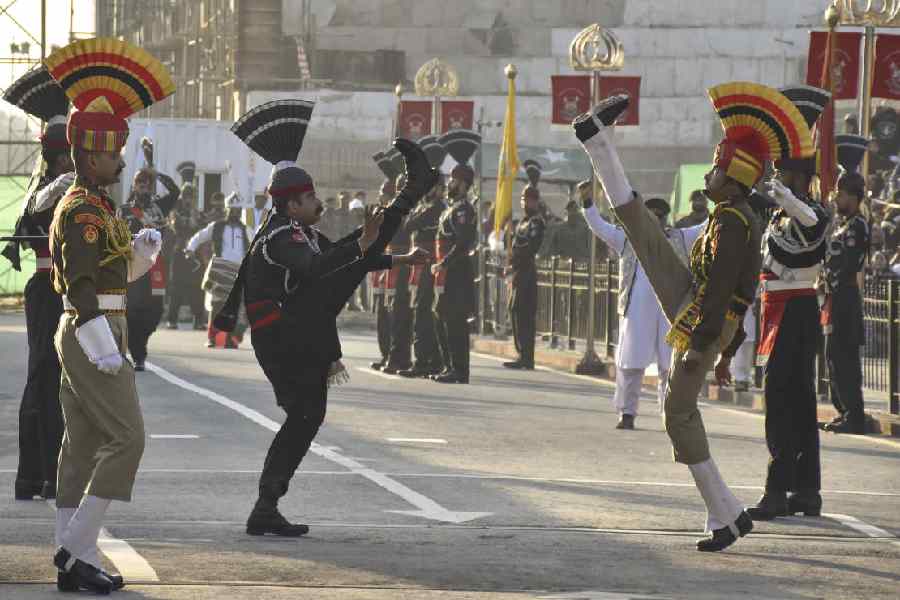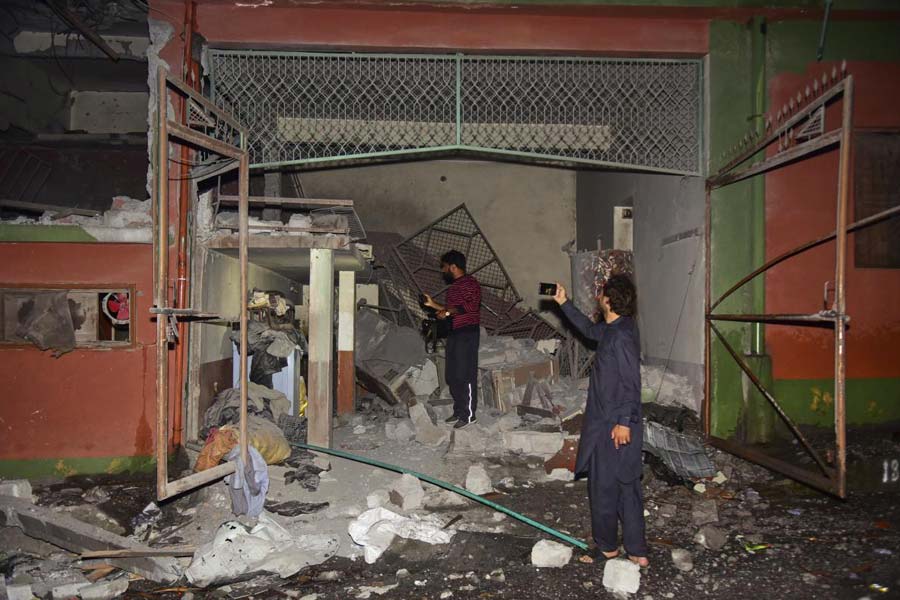 |
The National Festival of Veena allayed the fear of elders who tend to believe that gone are the days when an ancient instrument like the veena took a lead role in Carnatic music festivals.
Personally supervised by Dr M.L. Singhvi, the founder chairman of the Veena Foundation, New Delhi, and assisted by Calcutta’s Rasik Ranjan Sabha, this jointly organised two-day event was inaugurated by the Governor of West Bengal at the Thyagaraja Hall. Eminent veena players Suma Sudhindra, Saraswati Rajagopalan and Geeta Krishnamurthy performed on May 6.
On the second evening Jeyaraaj Krishnan and Jayasri Jeyaraaj displayed harmony in a duet recital on a pair of electronic veenas. They warmed up with a Thyagaraja krithi in Kapinarayani. The heavy pathos of the composition Mamava Meenakshi by Muthuswamy Dikshitar set to misrachapu in Varali was highlighted against the ragamalika based thanam when Bilahari, Bageshri and Brindavani breezed in and out with brilliant clarity. Their concluding Yamuna Kalyani, replete with the neraval, epitomised the Manodharma Sangeet ? the essence of classical music. Pallavi, the piece-de-resistance in aditalam, exhibited the creative abilities, mastery of rhythm and grasp of melodic motifs of this husband-wife team. Earlier, Radhika Rajanarayan gave a commendable lec-dem on the modified electronic and digital veenas that promised easy handling and hassle free travelling.
Revathi Sadasivam, belonging to the Dikshitar lineage, was equally comfortable with the traditional Saraswati veena as devised by Raghunath Naik of Tanjavur 250 years ago. Its majestic tone set it apart from the modernised ones. She deftly played a variety of compositions before settling down with the elaborate and majestic Simhendra Madhyam. These days, such presentations of various ragas enjoy almost a perfunctory status. This is perhaps to satisfy listeners of varying levels of acquaintance with the glorious structural richness of the krithis by the “Trinity” and a result of preferring to cater to wider varieties of tastes. R. Srinivasan and P.V. Sairam accompanied the artistes on the mridangam and kanjira. In the absence of the ghatam, the hearty taniavartanam was missing. A sitar recital was the concluding item since, according to veena-vidwan Raghurama Ayyar, the sitar is the “modern, romantic version” of the regal veena.


